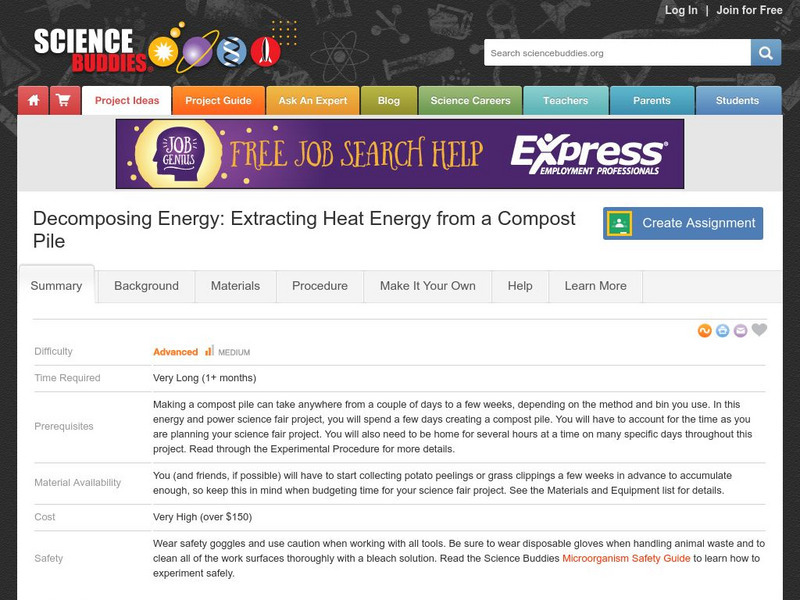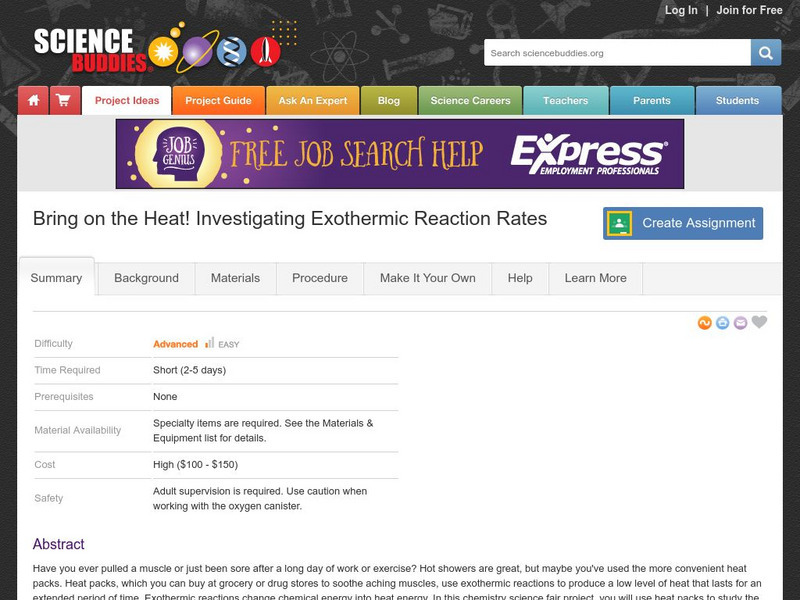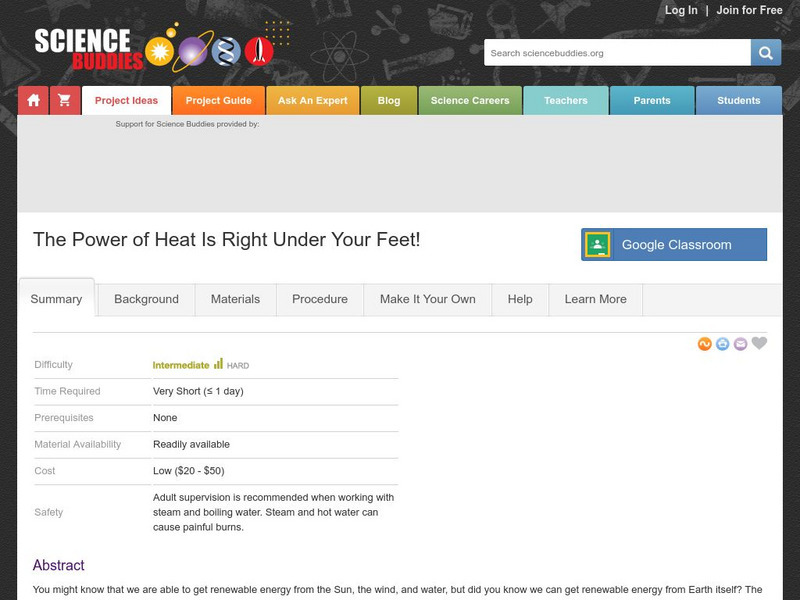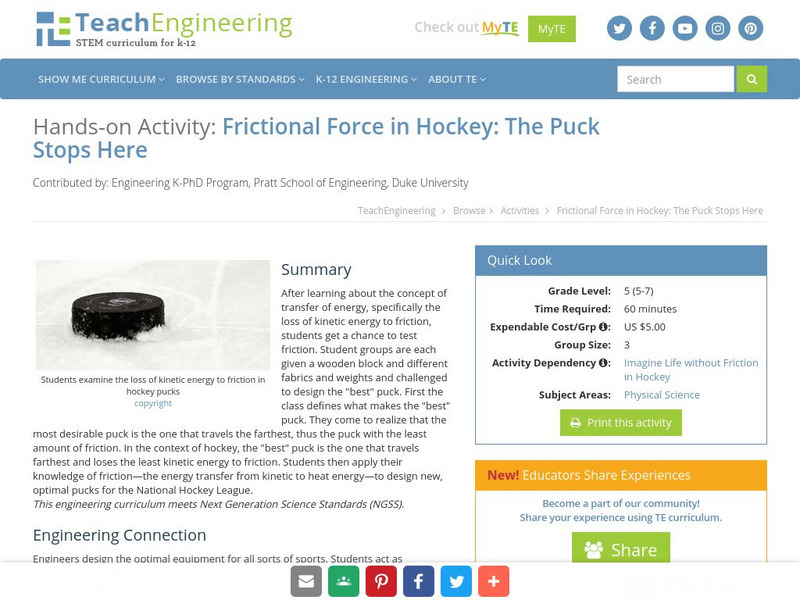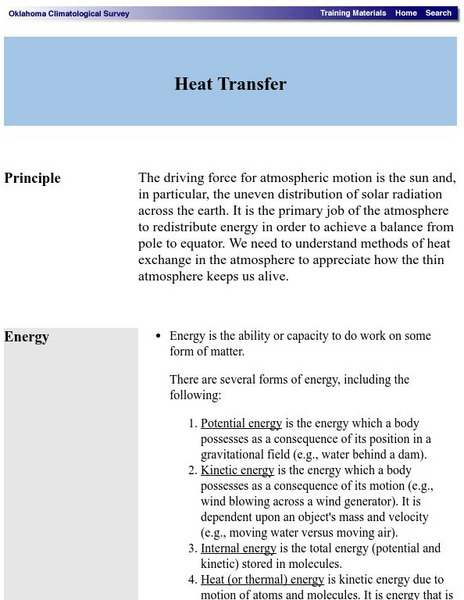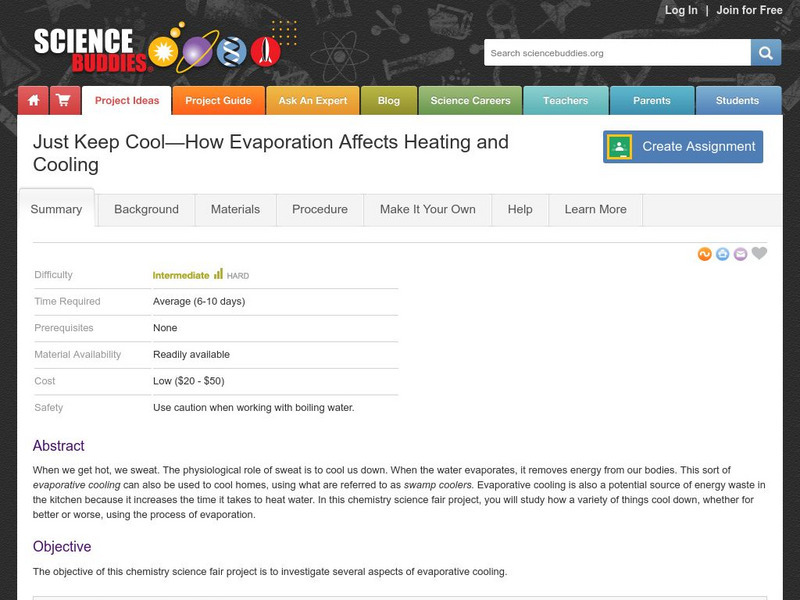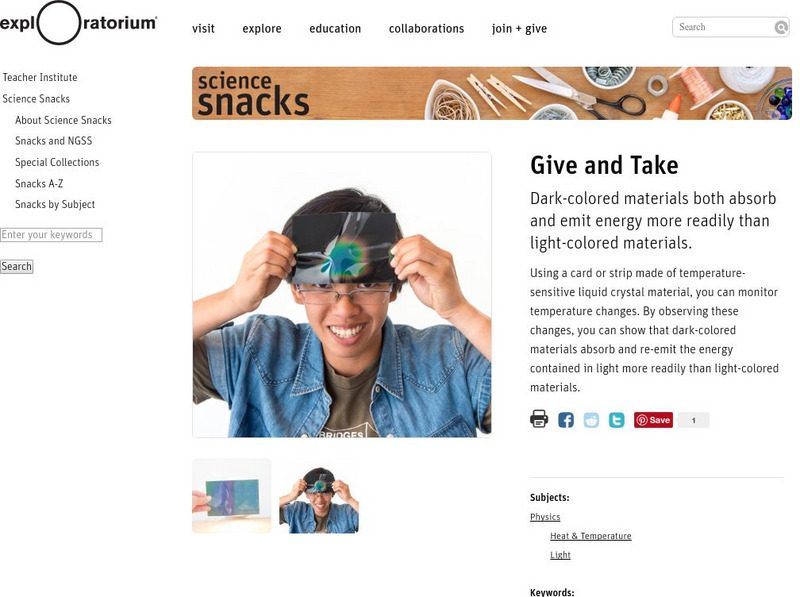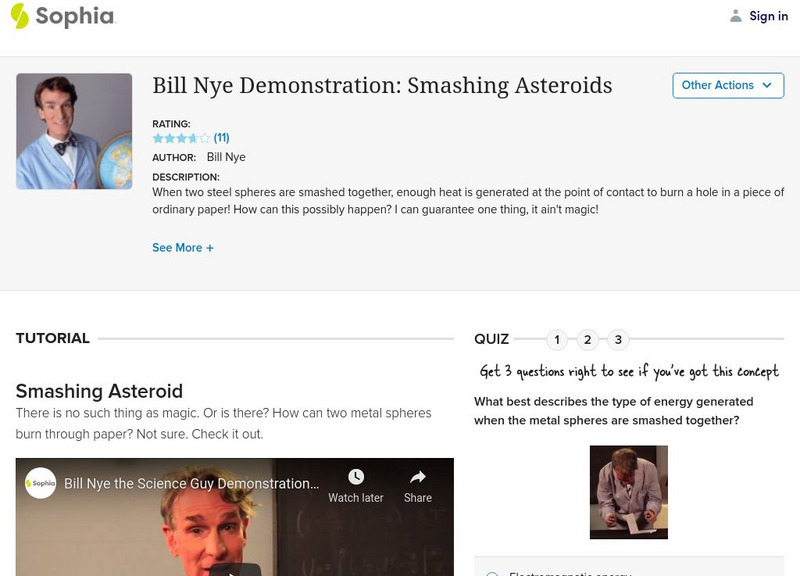Science Buddies
Science Buddies: Project Ideas: Decomposing Energy: Heat Energy From Compost
In this energy and power science fair project, the student will calculate the heat energy produced by an active compost pile, surrounding a tin can filled with water. The Science Buddies project ideas are set up consistently beginning...
Science Buddies
Science Buddies: Burning Biofuels: Comparing Nonrenewable and Renewable Fuels
Will using agrofuel offer a substantial alternative to using fossil fuel? With this experiment you can compare the amount of heat energy released by agrofuel and fossil fuel. The Science Buddies project ideas are set up consistently...
Science Buddies
Science Buddies: Bring on the Heat! Investigating Exothermic Reaction Rates
Have you ever pulled a muscle or just been sore after a long day of work or exercise? Hot showers are great, but maybe you've used the more convenient heat packs. Heat packs, which you can buy at grocery or drug stores to soothe aching...
Science Buddies
Science Buddies: Put Some Energy Into It! Use a Calorimeter to Measure
In this science fair project, use a calorimeter with an attached heating element to measure how water responds to added thermal energy.
Science Buddies
Science Buddies: The Power of Heat Is Right Under Your Feet!
You might know that we are able to get free energy from the Sun, the wind, and water, but we can also get free energy from Earth itself. This source of energy is called geothermal energy and it is all about taking advantage of the heat...
Science Buddies
Science Buddies: Are You in Hot Water? Use Solar Energy to Heat Your Own Water
The goal of this science fair project is to build batch solar collectors from different colors of plastic bags and see which collector is the most efficient in heating water.
Science Buddies
Science Buddies: Cold Room? Heat It Up With a Homemade Solar Air Heater
Humans need food, water, and warm shelter to survive. But a lot of humans depend on fossil fuels to supply gas and electricity to heat our homes. But burning fossil fuels to create energy is harmful to the environment. In this science...
TeachEngineering
Teach Engineering: The Puck Stops Here
After learning about transfer of energy, specifically the loss of kinetic energy to friction, students get a chance to test friction. In groups they are given a wooden block, different fabrics, and weights and asked to design the "best"...
Science Buddies
Science Buddies: Radiant Radish Seeds
We all know that plants need sunlight and water to grow big and tall. But did you know that inside seeds are baby plants, and that the fragile baby plant inside the seed needs to be protected? If you've ever had a sunburn, you also know...
Science Buddies
Science Buddies: Now You're Cooking!
Here is a project that uses direct solar power, gathering the sun's rays for heating and sterilizing water or cooking. It's a low-cost technology that seems to have everything going for it. Use this project to find out if it works, and...
Science Buddies
Science Buddies: Project Ideas: How Horses Keep Warm in the Wind
In this mammalian biology science fair project, students will learn about methods of heat transfer and determine the best direction in which horses should stand in a cold wind to maintain their core temperature. The Science Buddies...
University of Waterloo (Canada)
The University of Waterloo: The Heating Curve
The heat of vaporization along with several other thermal properties are explained. Sample problems are given. Illustrations.
Oklahoma Mesonet
Oklahoma Climatological Survey: Heat Transfer
A discussion from the Oklahoma Climatological Survey of the thermal factors effecting the movement of air masses in the atmosphere. Numerous topics such as methods of heat transfer, latent heat, phase changes (including sublimation and...
Science Buddies
Science Buddies: Just Keep Cool How Evaporation Affects Heating and Cooling
When we get hot, we sweat. The physiological role of sweat is to cool us down. When the water evaporates, it removes energy from our bodies. This sort of evaporative cooling can also be used to cool homes, using what are referred to as...
Science Struck
Science Struck: Conduction, Convection, and Radiation
Explains the concept of heat transfer and describes conduction, convection, and radiation which are the three modes of heat transfer. Includes formulas, examples, and applications.
Exploratorium
Exploratorium: Science Snacks: Give and Take
An activity for students to explore how dark-colored materials absorb and emit more energy vs. light-colored material.
Science Struck
Science Struck: Thermal Energy Facts
Explains what thermal energy is, describes some different types, and presents facts about each type.
Science Struck
Science Struck: A Comprehensive List of All the Physics Formulas
Provides a long list of physics formulas for easy reference.
Sophia Learning
Sophia: Bill Nye Demonstration: Smashing Asteroids
Watch and learn as Bill Nye the Science Guy demonstrates what happens when two steel spheres are smashed together. Enough heat is generated at the point of contact to burn a hole in a piece of ordinary paper. [1:05]
Ducksters
Ducksters: Environment for Kids: Solar Energy
Kids learn about solar energy and how this renewable power can help the environment. Teach students about solar cells and using the sun for heat.
University of Alaska
Alaska Science Forum: Daniel Fahrenheit, Anders Celsius Left Their Marks
This resource provides an account of the lives of the two scientists responsible for two of the most common temperature scales. Includes biographical information about each and a description of how each developed their own temperature...
Concord Consortium
Concord Consortium: Stem Resources: Greenhouse Light and Temperature
An interactive tool where students can create a model of a greenhouse and use a light sensor to measure the amount of light it receives from a lamp at various times of the day. Temperature is also measured. Data is plotted on graphs,...
University of Houston
University of Houston: Engines of Our Ingenuity: Count Rumford
A transcript, from a syndicated radio broadcast, that discusses the life and scientific accomplishments of Count Rumford. An anecdotal account of Rumford's contribution to our understanding of heat. Contains a good deal of biographical...
University Corporation for Atmospheric Research
Ucar: Introduction to the Atmosphere
A detailed overview of the Earth's atmosphere, with explanations about atmospheric properties, the structure of the atmosphere, its four layers, atmospheric processes, energy heat transfer, conduction and convection, and radiation. All...
